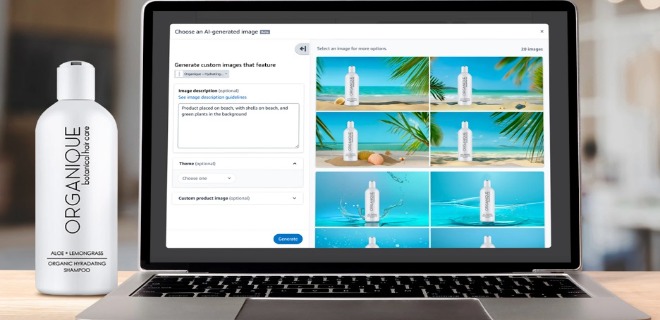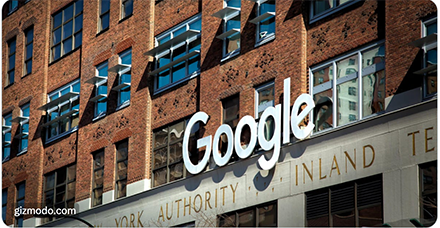 |
||||||||||||
|
||||||||||||
| Who’s That Creeping on Your IP Address? Chrome Introduces New IP Protection Feature |

Image sourced from Shutterstock
|
| Say goodbye to tracking IP addresses on Chrome browsers and hello to stricter privacy guidelines. Google's almighty hand is stripping away another industry standard as they prepare for a new IP Protection feature. The new feature will enhance user's privacy by masking their IP addresses using proxy servers. Traditionally, IP addresses allowed websites and online services to track a user's online presence to create a consumer profile. It was a one-stop shop to understand a consumer's online presence. However, this technique, like many digital media techniques before the privacy reckoning, allowed a big bad wolf to sneak into consumer's digital homes. Unlike third-party cookies, consumers do not have a direct way to evade covert tracking through IP addresses. So, how do consumers stop this big bad wolf from blowing down their digital homes and using their data without permission? For now, Google will implement its new IP Protection feature. How Does IP Protection Work? While websites can use IP addresses for tracking, they are also essential for crucial web functions such as directing traffic, preventing fraud, and performing vital network tasks. The IP Protection feature deals with this by directing third-party traffic from specific domains through proxies, rendering users' IP addresses hidden from those domains. The IP Protection feature description states, "Chrome is reintroducing a proposal to safeguard users from cross-site tracking through IP addresses. This proposal involves a privacy proxy anonymizing IP addresses for qualifying traffic, as outlined above." |
| But enough about those pesky consumers, right…just joking. How will this impact publishers? Keith Petri, CEO of lockr, believes that Chrome's foray into IP manipulation puts additional strain on the ecosystem and will undoubtedly impact publishers. The IP Protection feature targets vendors across the advertising industry, so it will not affect direct server calls on publishers' infrastructure. "However, it will impact the majority of third-party tools publishers utilize to manage their advertising business, including analytics, data management platforms, supply-side platforms, ad servers, and measurement companies," said Petri. This new brand of signal loss doesn't extinguish all hope. Dan Rua, CEO of Admiral, said that any intelligent publisher is cultivating their first-party visitor relationships and data to compensate for the signal loss. "Passive signals that avoid active consent are going the way of the Dodo bird," says Rua. "You can't flip a switch and immediately compensate for a lost signal or hope that Google will act in your best interest. It takes strategic decisions at the CEO/CRO level to prioritize visitor relationship management and consent-based data capture in 2024. It can start simply as email capture by default, but ultimately crosses departments and the entire visitor journey." Petri agrees that first-party relationships with consumers are the golden ticket to ensuring you don't lose a large portion of your audience. Publishers can incentivize users to log in if they establish a clear value proposition and a healthy, consented relationship with consumers. Petri adds, "First-party, authenticated and consented users allow for the ability to clearly identify audiences across properties and devices, to profile and target, attribute, and re-engage." |
|
| The Rise of Publisher-Powered Commerce Media | ||
| For marketers pursuing reliable business growth, commerce media is fast becoming an indispensable asset. U.S. retailers will invest over $73 billion in online advertising this year, while U.S. retail media ad spend will exceed $45 billion—a 20% year-on-year increase from 2022. The message from the market is clear: They’re going all-in on commerce media. A Forrester Consulting study commissioned by Criteo reveals the trend in starker terms: 80% of marketers consider commerce media a top business objective, while 65% believe it can significantly boost growth. For publishers, this opens the door to big opportunities. To take advantage of the shift to commerce, publishers are starting to develop commerce strategies that include retail-focused content, affiliate links, and retail marketplaces, as well as looking to enrich their inventory with commerce insights from a variety of sources. The real question is, what's next? How can publishers capitalize on the future of commerce media? It's a question that demands both innovation and strategy—and the time to act is now. |
||
| Commerce media fuses data intelligence with digital advertising to reach consumers across their shopping journeys. This not only boosts business outcomes for advertisers but also helps deliver better shopping experiences to consumers. Where do publishers fit in? They play a pivotal role by attracting audiences, aggregating their attention, and securing their trust – specifically around key verticals and passion areas. This makes open web environments critical stopping points in the shoppers’ journey – from product discovery (editor’s picks) to consideration (product reviews/comparisons) to point of purchase (storefronts, affiliate, shoppable formats). That means publishers looking to tap into the massive commerce media opportunity need to build a commerce strategy that includes content, retailer and brand partnerships, new ad formats, shopper intent data collection and segmentation, audience packaging, and product curation and merchandising – some of which are entirely new disciplines for traditional media owners. To jumpstart this transformation, many publishers are turning to technology partners already plugged into the commerce media ecosystem, such as Criteo’s Commerce Grid, the first SSP purpose-built for the future of Commerce Media. With Commerce Grid, publishers can seamlessly integrate shopper data into existing deals and audience packaging strategies, take advantage of audience purchase history and shopping preferences to inform edit strategy, and access proprietary commerce formats to unlock retail incremental retail media spend. The future of Commerce Media is huge, and Criteo Commerce Grid brings that opportunity directly to publishers. Learn more here. |
||
|
||
| Amazon Expands Ad Services, Rolling out Clean Room for Publishers, an Image AI Tool, and a Low Barrier Streaming TV Ad Service |
 |
| Amazon’s unBoxed 2023 conference has been eventful. The retailer announced a plethora of new ad tools and expansion of existing ones that are likely to impact the industry in a big way. One of those tools is Amazon Publisher Cloud, a new cleanroom service for publishers. According to Amazon, this is “the first and only clean room solution that enables a publisher to analyze its first-party signals with Amazon Ads insights to create deals optimized for reach.” Those deals can be activated in the Amazon DSP. Participating publishers include NBCUniversal, Dotdash Meredith and DIRECTV. Amazon Publisher Cloud follows on the heels of Amazon Marketing Cloud, which was launched last year. Data clean rooms are widely seen as a privacy-compliant way to hone in on audiences and to assess campaign performance. DSP Updates: Amazon also announced several updates to its DSP, including a new cross-channel planner. This tool makes it easy for advertisers to create full-funnel media plans both on and off Amazon properties. The planner spans multiple ad formats, including sponsored ads, display, online video, streaming TV, and audio. Sponsored TV: Amazon rolled out a beta Sponsored Ad service for streaming TV. With this service, advertisers of all sizes can test their luck with streaming TV ads. To encourage TV-curious brands, Amazon eliminated key barriers faced by smaller brands, such spending minimums and daily budgets. Generative AI: And what would 2023 be without an generative AI announcement? Getting in on the craze, Amazon announced a generative AI tool that lets sellers generate custom images for their ads in order to enhance the ad experience. Why show an image of a beach towel when you can show that image on a beach? Users can type in a description of the lifestyle or feeling they want and can pick an image that reflects what they had in mind. Amazon Creator Ads: Together with WPP’s The Goat Agency, Amazon announced a deal to run creator-generated ads on and off Amazon, including in search results. Influencer-based ads can not be run through Amazon’s DSP so that they appear on publisher sites as well as search results. For a complete list of updates (and there are many) check out Amazon’s What’s New With Amazon’s Ad Page. |
| Amazon’s expanding suite of ad products is certainly providing strong incentives for advertisers to spend their budgets with them. Even before the unBoxed 2023 announcements, Amazon ad sales were going up. For instance, the company announced that ad revenues had increased 22% in the second quarter of 2023, largely due to improvements in its ad tech. Amazon’s success comes at the expense of Google. For instance, CNBC reported that Amazon succeedsl in diverting money away from Google’s search business, with some brands shifting as much as 60% of their Google Search ad budgets to Amazon. For Google, there is a bit of a silver lining to Amazon’s growing dominance: During a federal antitrust trial, Jerry Dischler, Vice President for Google's advertising products, stated that Google is losing share to other new entrants, including TikTok and Amazon. “I would not say Google search ads are a must-have for any advertiser,” Dischler said. Whether or not the regulator buys that argument, you got to admire Google’s attempt to turn lemons into lemonade. |
| Around the Water Cooler |
| Here's what else we're chatting about... Threads Won’t Amplify News Meta’s X competitor has plans to release a Threads API, providing developers with a mechanism for creating different apps and experiences around Threads. A Threads deck? Maybe. While Instagram head Adam Mosseri acknowledges the API will offer creators opportunities to get more content onto Threads, the company doesn't want them to be overshadowed by publisher content .”Threads isn’t anti-news,” he stated, “but it won’t actively amplify news.” Though social media serves as a great traffic source for pubs, this statement furthers the company’s stance on not wanting to invest in news. (TechCrunch) Snap Faces Advertising Challenges Amidst Amazon's Reduced Spending In early spring, Snap experienced a significant setback when Amazon, one of its major advertisers, abruptly reduced its advertising budget for the first half of 2023. This move came at a time when Snap's ad business was already under pressure due to declining sales and increased competition from TikTok. (Business Insider) Spotify Reports First Quarterly Profit Since 2021 Spotify has posted $34 million in operating income, marking its first quarterly profit since 2021. This profitability comes after a rare price increase in July that boosted gross margins without negatively affecting user growth. (Axios) |
| @{optoutfooterhtml}@ |











